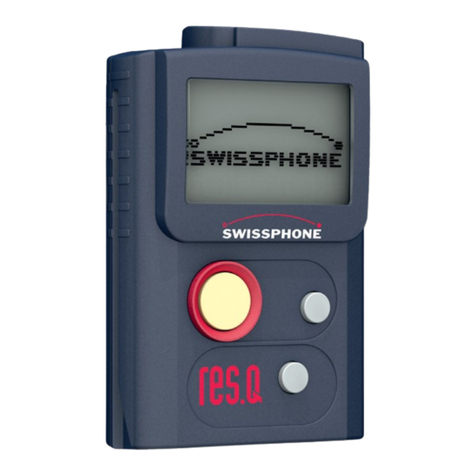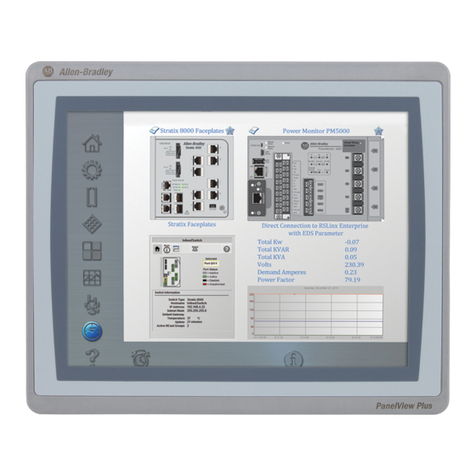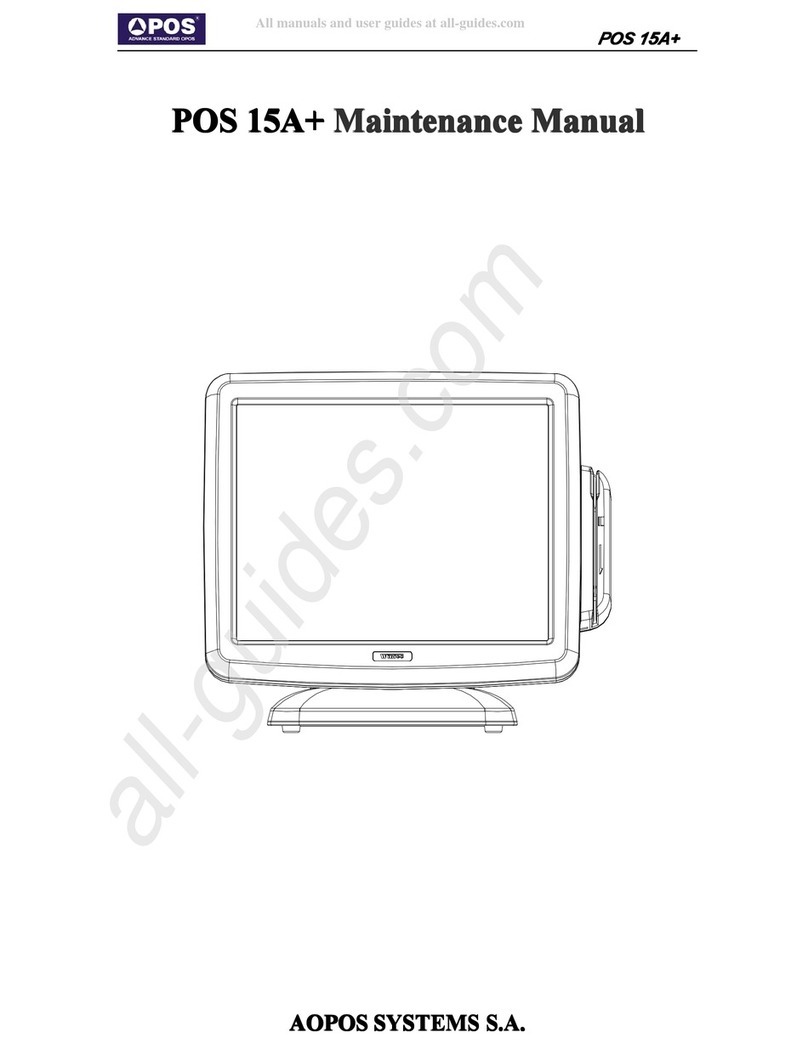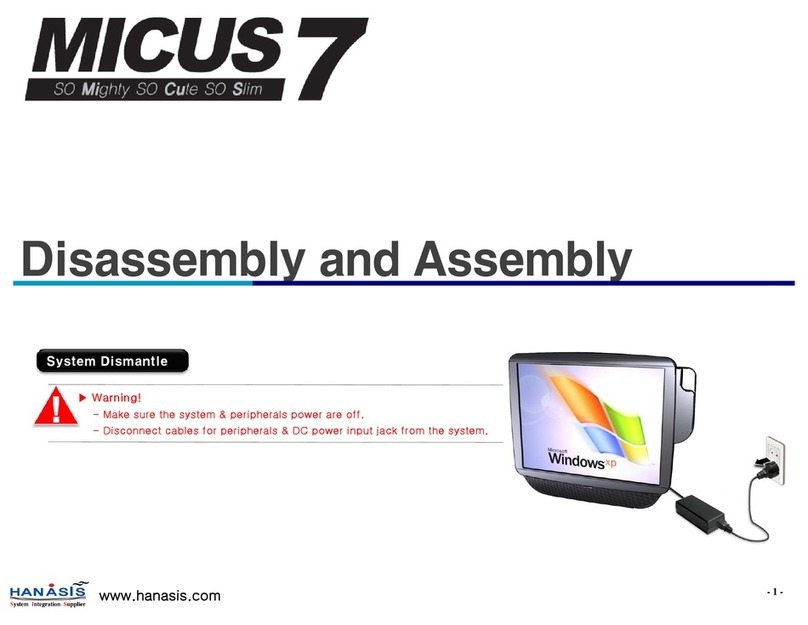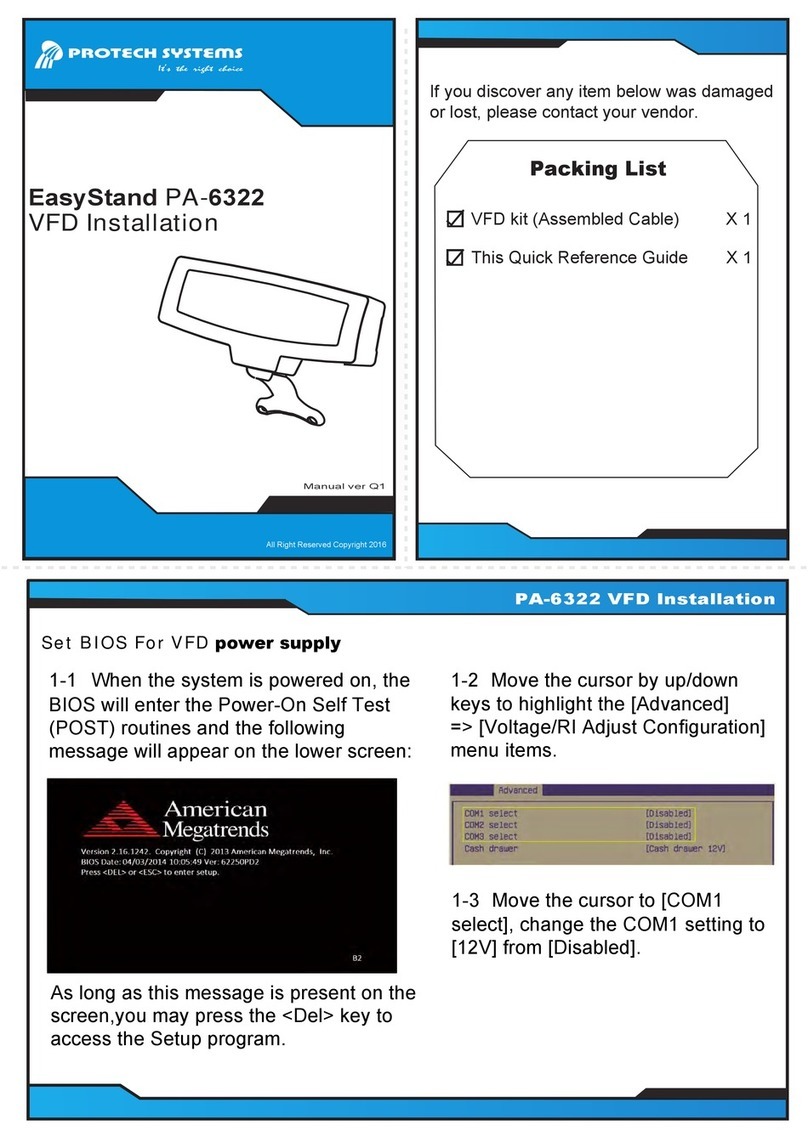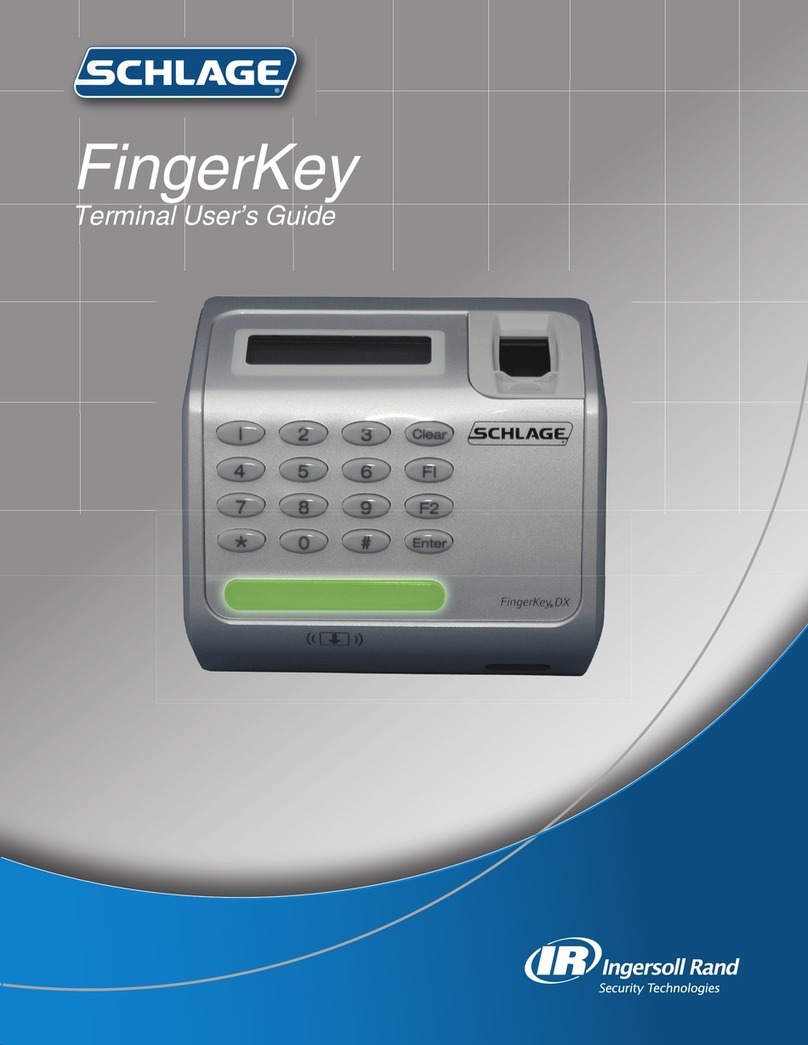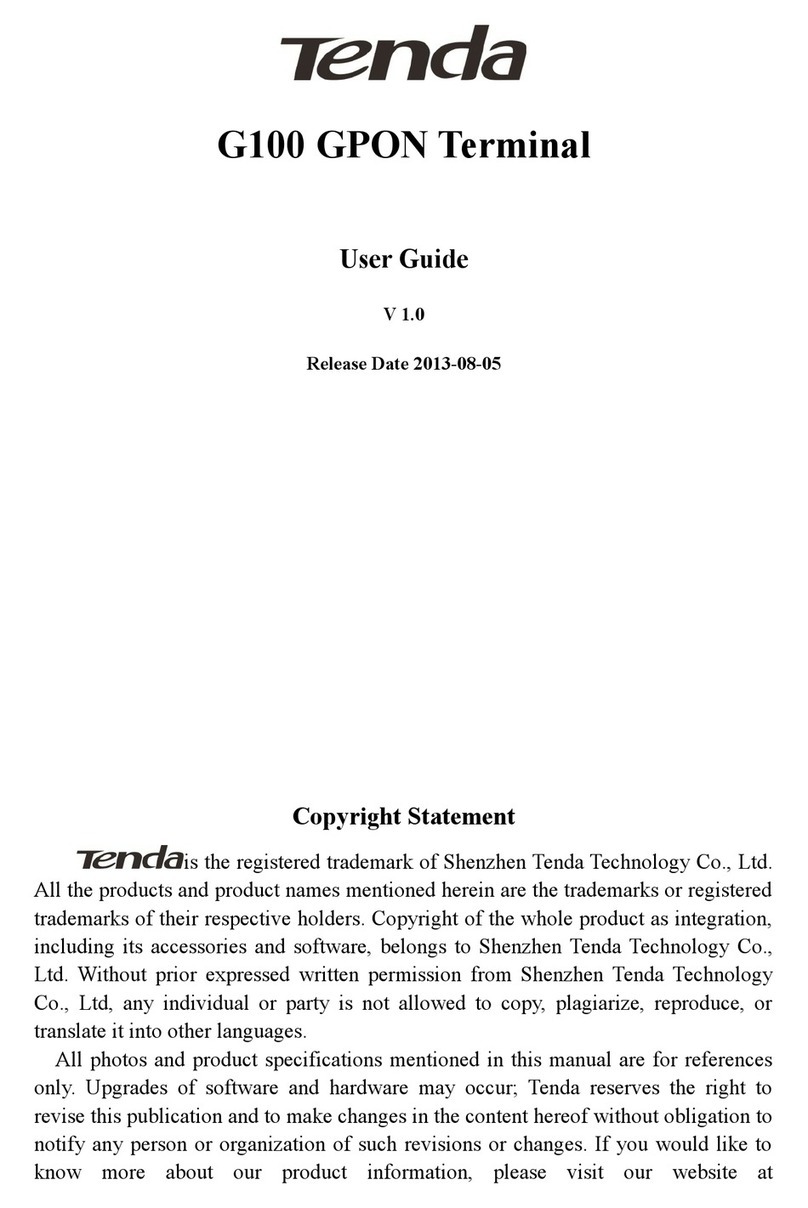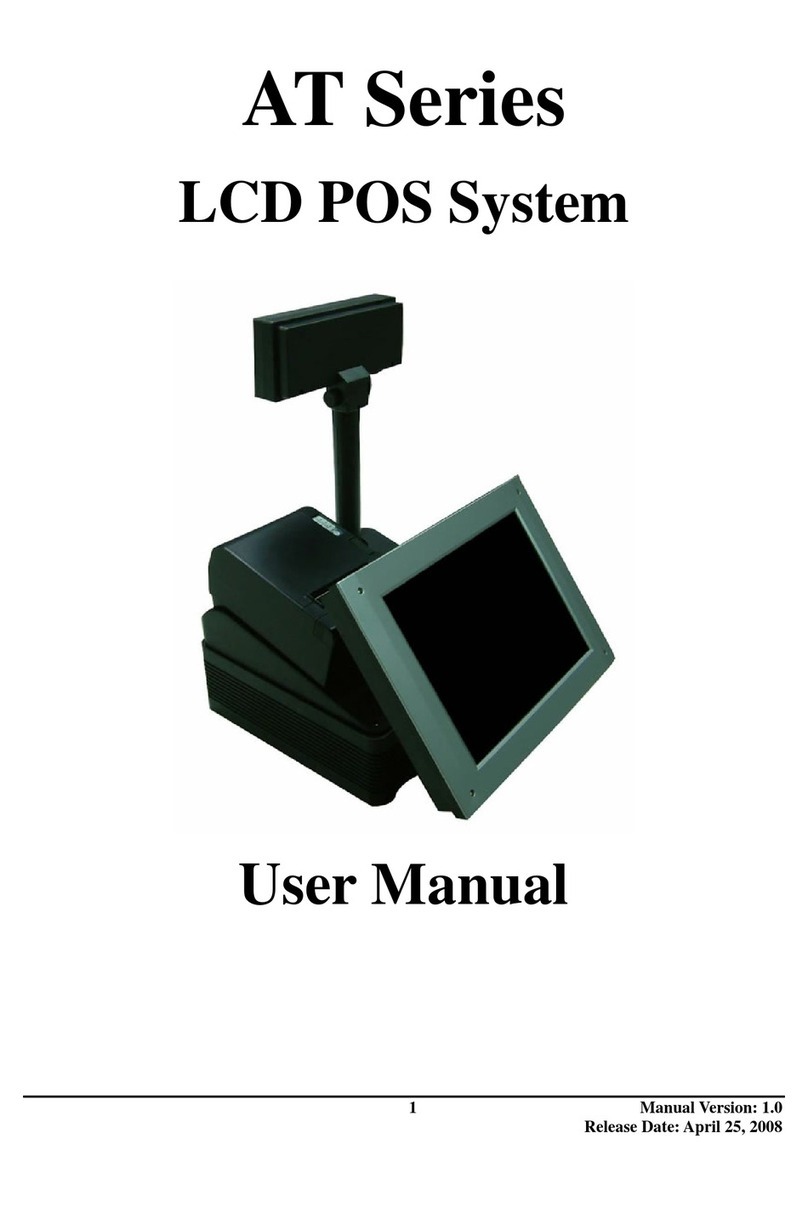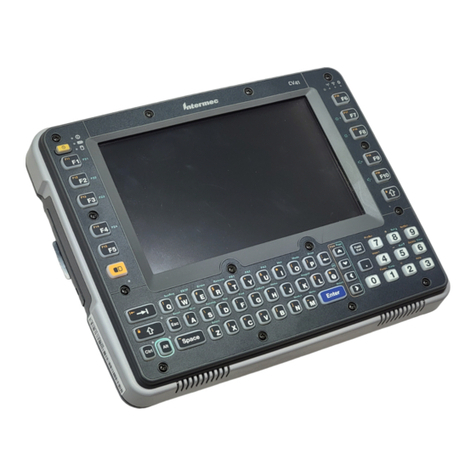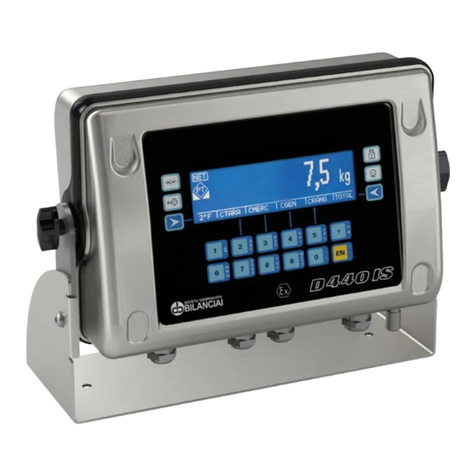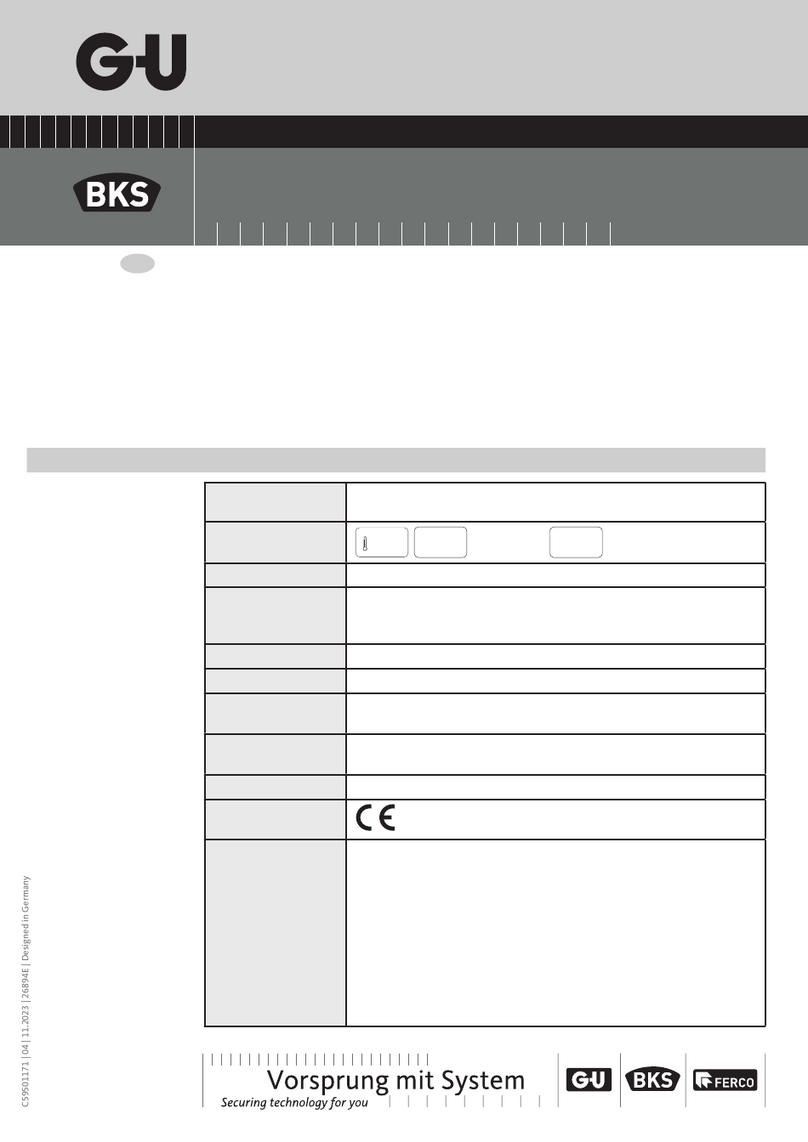SwissPhone DE10A User manual

Service Manual DE10A (DE935) Page 1 / 21
Swissphone
Service Manual DE10A (DE935)
Version 1.2, February 2012
Swissphone Telecom AG
Fälmisstrasse 21
CH-8833 Samstagern

Service Manual DE10A (DE935) Page 2 / 21
Contents
1Document .................................................................................................................................... 3
1.1Purpose .................................................................................................................................. 3
1.2Abbreviations and terms ........................................................................................................ 3
1.3References ............................................................................................................................. 3
2Assembly/disassembly information......................................................................................... 4
2.1Assembly................................................................................................................................ 4
2.1.1Preparation ............................................................................................................................ 4
2.1.2Assembling the device........................................................................................................... 4
2.2Disassembly........................................................................................................................... 5
2.3Separating the Display from the Main Board ......................................................................... 6
3Modes of operation..................................................................................................................... 6
3.1Normal mode.......................................................................................................................... 6
3.1.1Additional information on ECO mode .................................................................................... 6
3.2Hidden menu.......................................................................................................................... 6
3.2.1Device information................................................................................................................. 6
3.2.2Delete all messages .............................................................................................................. 6
3.2.3Delete IDEA keys .................................................................................................................. 7
3.2.4back ....................................................................................................................................... 7
3.3Test mode .............................................................................................................................. 7
3.3.1Test POCSAG ....................................................................................................................... 7
3.3.2Test LCD................................................................................................................................ 8
3.3.3back ....................................................................................................................................... 8
4Instructions on adjustment to the tuning frequency.............................................................. 9
4.1Requirements......................................................................................................................... 9
4.2Retuning ................................................................................................................................. 9
4.2.1Measurement setup............................................................................................................... 9
4.2.2Preparing the pager for the tuning frequency...................................................................... 10
4.2.3Settings................................................................................................................................ 10
4.2.4HF adjustment ..................................................................................................................... 10
4.3Sensitivity test ...................................................................................................................... 11
5Changing the channel spacing ............................................................................................... 11
6Changing the frequency band................................................................................................. 11
7Function test/calibration.......................................................................................................... 12
7.1Measurement setup ............................................................................................................. 12
7.2PSWplus tools (service) ....................................................................................................... 12
7.3Service tools in PSWplus (service) ...................................................................................... 15
7.3.1Power Source ...................................................................................................................... 15
7.3.2RSSI calibration................................................................................................................... 16
7.3.3Repair number..................................................................................................................... 17
8Measurements........................................................................................................................... 17
8.1BAT+ .................................................................................................................................... 17
8.2VDD...................................................................................................................................... 17
8.3Batt measurement correction ............................................................................................... 17
8.4Sub clock.............................................................................................................................. 17
8.5Main clock normal ................................................................................................................ 17
8.6Main clock shift..................................................................................................................... 18
8.7PLL reference oscillator ....................................................................................................... 18
8.8V+......................................................................................................................................... 18
8.9Tune and test VCO .............................................................................................................. 18
8.10T1/T2 current (LNA) ............................................................................................................. 19
8.11T41 current (VCO)................................................................................................................ 19
8.12T80 current (buffer) .............................................................................................................. 19
8.13T51 current (1st mixer)......................................................................................................... 19
8.14IF current (IC61)................................................................................................................... 19
8.15HF current ............................................................................................................................ 19
8.16µC on current ....................................................................................................................... 20
8.17Off mode current .................................................................................................................. 20
9List of testing points ................................................................................................................ 21

Service Manual DE10A (DE935) Page 3 / 21
1 Document
Version Date Author Subject
1.0 May 2011 D. Widmer 1s
t
version created on the basis of DV09A and DE920
1.1 02.11.2011 D. Widmer Minor corr.; name of end device changed to DE935
1.2 23.02.2012 D. Widmer Limit values in Section 8 updated
1.1 Purpose
This manual contains all the information required to perform service work on the DE935, such as
adjusting the tuning frequency, checking the function of individual circuit blocks, detailed
measurements etc. DE935 usually refers to the end device, whereas the name DE10A is generally
used for the project and the device’s components.
1.2 Abbreviations and terms
Ah Ampere-hours
HF High Frequency
IF Intermediate Frequency
LF Low Frequency (audio)
LNA Low Noise Amplifier
PLL Phase Locked Loop
VCO Voltage Controlled Oscillator
np not populated
nc not connected
POCSAG Paging format (Post Office Code Standardization Advisory Group)
ppm parts per million
PWM Pulse Width Modulation
RIC Receiver Identity Code
RSSI Received Signal Strength Indication
PSW Parameterisation SoftWare
PWM Pulse Width Modulation
TEM cell Transverse Electro Magnetic cell
AC Alternating Current
µC µ(micro) Controller
Signal description
{/Signalname} Signal Low active e.g.: /RST_LCD
{Signalname} Signal High active LE_PLL
Component references
Component reference pin number e.g.: IC101.6
1.3 References
[1] TPH DE10A Rev1.0 visiert.doc
[2] Schematic drawing DE10A VHF: 0434.2061
[3] Component assignment plans DE10A VHF: 0434.2005 and 0434.2006

Service Manual DE10A (DE935) Page 4 / 21
2 Assembly/disassembly information
Putting the casing together requires special care and attention otherwise the ribbon cable of the liquid
crystal display could be damaged. Assembly is therefore described first. Opening the casing is
described in the second part of this document.
2.1 Assembly
2.1.1 Preparation
To simplify the assembly process it is advisable to affix a self-adhesive tab (0319'591 label) to the
ribbon cable. This tab helps to keep the cable in the correct position and ensures that the cable is not
crushed unintentionally. The drawings on the next page show where the tab is to be affixed. It is
marked in red.
Both casing sections contain components that are not affixed with screws, the keypad (1) in the upper
section of the casing and the vibrator (2) in the lower section of the casing. Both components must be
affixed correctly before the device is assembled. The vibrator is fitted with the flyweight (3) pointing
outwards. The keypad easily falls out during assembly and therefore has to be pushed slightly into the
upper section of the casing on the studs.
2.1.2 Assembling the device
To assemble the DE935, set the main circuit board with the clear plastic light guide and liquid crystal
display circuit board in the lower housing part (4) place the subrack with light conductor and the
subrack of the liquid crystal display in the lower casing section (4) and snap the upper section into
place. Make sure that you start from the side with the beeper in order that the beeper seal is not
pushed out of place. This sequence is necessary as the flex from the subrack of the liquid crystal
display tends to run outside of the middle tab of the five fixing tabs (5), which can result in damage.
Please always check that the flex is on the correct side of the middle tab.
The two sections of the casing are then screwed together using two screws (no. 0 Philips screwdriver).
Position of the self-adhesive tab (Section 0).
1
2 and 3
4
5

Service Manual DE10A (DE935) Page 5 / 21
2.2 Disassembly
First, remove the battery and undo the two screws. Then carefully lift the device on the side with the
screws in order to release the tabs snapped in place on the opposite side. No components are affixed
with screws inside the device.
Place the pager on the table with the display facing downwards
Separate the two casing sections by a few millimetres on the battery side
Carefully separate the two casing sections on the ribbon cable side. The upper casing section
must not be pivoted too much otherwise the ribbon cable may become damaged by a tab.
Check that the ribbon cable has not been damaged.

Service Manual DE10A (DE935) Page 6 / 21
2.3 Separating the Display from the Main Board
After the SMD connector has been opened and the flex has been disconnected, the clear plastic light
guide clamp (next to the flex connector) must be carefully released. Then, the same side of the clear
plastic light guide is raised until the fixing studs are lifted out of the PCB; the clear plastic light guide
can then be removed to the side.
Note: Do not use excessive force when disconnecting the clear plastic light guide from the
circuit board, otherwise the guide angle of the clear plastic light guide may break.
The PCB and the clear plastic light guide are assembled in reverse order – put in position first, then
snap into place and then connect the flex. The flex can be bent slightly in the hand to make it easier to
carry out the work.
3 Modes of operation
3.1 Normal mode
When a battery is inserted into the DE935 or when the confirmation button is pressed and held down
while the pager is switched off the pager switches on and runs in normal mode.
This is the standard mode of operation. Please read the manual for information on the corresponding
device functions.
3.1.1 Additional information on ECO mode
This is a special mode which is part of normal mode. It facilitates improvement of the device’s
autonomy (battery life) as well as a slight improvement in sensitivity. The improvements are achieved
by switching off the display including drivers. The clock and the icons become visible again after a
button has been pressed.
Eco mode can be activated/deactivated via the Settings menu item (if configured).
This mode must not be confused with “Radio” = eco. The receiver (Radio) is constantly activated and
deactivated during normal mode (Economizer) in order to provide greater battery autonomy.
3.2 Hidden menu
If all three buttons are pressed and held down when the battery is inserted the hidden menu appears.
The menu items can be selected using the navigation buttons and executed using the confirmation
button.
3.2.1 Device information
Shows the firmware version and the serial number of the device. Return to the hidden menu using the
confirmation button.
3.2.2 Delete all messages
Deletes all messages in the pager after the query has been confirmed.

Service Manual DE10A (DE935) Page 7 / 21
3.2.3 Delete IDEA keys
All IDEA keys are deleted after confirmation.
3.2.4 back
Returns to the pager’s normal mode of operation.
3.3 Test mode
If the two navigation buttons are pressed and held down while the battery is being inserted the test
menu appears. The menu items can be selected using the navigation buttons and executed using the
confirmation button. The test mode main menu appears as follows.
3.3.1 Test POCSAG
3 modes can be set – tuning mode, verify mode and free mode.
tuning mode verify mode free mode
tuning mode
In tuning mode, HF is permanently set to the tuning frequency and the device can be adjusted as
described in Section 4.2. The parameters cannot be changed in this mode.
verify mode
In verify mode, the pager can be checked on the customer frequency or on one of the 8 customer
frequencies (depending on whether it is a single-channel or multi-channel device). The tuning
frequency and the band limits can also be selected. A short alert is signalled when a call is received;
call suppression is not enabled.
The parameters are as follows in verify mode. "Network" is network 1 (can be changed), "RIC" =
programmed and "Radio" = economized.

Service Manual DE10A (DE935) Page 8 / 21
free mode
free mode is available for individual tests in addition to the two main modes. All the parameters in free
mode can be selected as follows.
Network: tuning / upper / network 1 / network 2 / network … / network 8 / scanner / lower
Baud: auto / 512 / 1200 / 2400
Radio: economized / off / continuous
RIC: 500 A / programmed
Monitor: off / on
Network
network 1 to 8: Frequency is between the lower and upper frequency
scanner: Network 1 and network 2 are scanned
lower: Frequency at lower end of band
tuning: Tuning frequency (average frequency)
upper: Frequency at upper end of band
Baud
Auto Uses the baud rate in the configuration
512 / 1200 / 2400 Uses the selected value
Radio
economized HF runs in economizer mode (standard operating mode)
off HF is always off (no reception possible)
continuous HF is always on
RIC
500 A Evaluates calls with RIC 500, subaddress A
programmed Evaluates calls with RIC from the configuration
Monitor
off Normal mode, traffic not audible
on Directs the data to the beeper (traffic audible in basic band)
3.3.2 Test LCD
With Test LCD, you can scroll between the following test displays using the navigation buttons.
Return to the test menu using the confirmation button.
3.3.3 back
Exits test mode and starts the pager in normal mode after a reset.

Service Manual DE10A (DE935) Page 9 / 21
4 Instructions on adjustment to the tuning frequency
4.1 Requirements
The tuning frequency must be in the middle of the frequency band that the device was set up for at the
factory. It is not advisable to change the tuning frequency.
4.2 Retuning
4.2.1 Measurement setup
Cathode ray oscilloscope
Frequency counter
HF generator
Test cable TK9xx, item no. 0951005 (see illustration)
Multimeter
Pocsag sensor
The IF cable is connected to a CO with frequency counter and the HF cable is connected to a signal
generator. The two sprung metal pins establish a contact at TP61 and TP62.
HF cable IF cable (450kHz)
TK9xx
(rearview)
HF generator
CO
Freq. counter
DE935

Service Manual DE10A (DE935) Page 10 / 21
4.2.2 Preparing the pager for the tuning frequency
Remove the battery cover and the battery
Remove the tuning compartment cover (black cover plate). Note: Seal will be destroyed
Insert the battery and put the device in test mode: hold both scroll buttons down while the battery
is being inserted until the inverted start screen appears on the display
Press the Enter button to select "Test POCSAG" from the test menu
"Mode tuning" will be displayed in the top line. If not, scroll through the test modes using the Enter
button until "Mode tuning" is displayed
Connect test cable TK9xx to the device
4.2.3 Settings
HF generator: fHF = tuning frequency
Deviation = 4.5 kHz
HF level: Must be continuously reduced during adjustment
CO: Time / DIV: 0.5 ms
V / DIV: 20 mV
4.2.4 HF adjustment
The HF level must be reduced gradually during adjustment. It must be clearly above the noise limit
and the receiver must never be allowed to fall within the limits. This is identified if the IF amplitude
remains unchanged despite an increase in the HF level. Execute the following steps to tune the
receiver.
1. With C40, tune the VCO control voltage (measured at TP3) to 1.50 V ± 0.05 V and check the
voltage at the band limits to ensure that they comply with the limit values (see Section 8.9).
2. With C2, (antenna circuit) tune to the maximum IF signal amplitude.
3. With C14, adjust to the maximum IF signal amplitude (tune band-pass).
4. With C11, adjust to the maximum IF signal amplitude.
5.
6. With C11, C14, C2 (in this order) maximise the IF amplitude again (fine adjustment).
7.
Adjust VCO control
voltage (measured at
TP3) with C40 Tune band-pass with C14
Tune antenna with C2
Tune band-pass with C11
4
1
3
5
6
2 7

Service Manual DE10A (DE935) Page 11 / 21
4.3 Sensitivity test
The device is tested in the TEM cell. It must be positioned on an approx. 3 cm thick insulating body in
the cell. The antenna is placed on the supply side. Tested in this way, the DE935 must comply with the
following call sensitivities.
2m
512 baud
3 out of 4 calls at -104 dBm
1200 baud
3 out of 4 calls at -102 dBm
2400 baud
3 out of 4 calls at -100 dBm
(TEM cell, order number: 0352000
"Freifeld-Messbox TEMCELL 1700")
5 Changing the channel spacing
When the channel spacing is changed between 12.5kHz and 20kHz / 25kHz, the 450kHz filter F61
must be replaced (see item numbers below).
25 kHz 0213456 FILTER_SMD KER CFWCA450KEFA ELFY450E 450kHz
12.5 kHz 0213457 FILTER_SMD KER CFWCA450KGFA 450kHz
After modifying the hardware, the channel spacing must be reprogrammed accordingly using the
PSWplus (service version) (PSWplus Device information Channel spacing).
6 Changing the frequency band
The pager is equipped for a particular frequency band during production. Changing the frequency
band is not intended to be included in the service.

Service Manual DE10A (DE935) Page 12 / 21
7 Function test/calibration
7.1 Measurement setup
Equipment required
Service adapter Item no. 0951001 SA900 (with LCD module for DE925)
Programming unit Item no. 0951441 SGA Expert Set EURO
HF generator
CO with frequency counter
PC
Lab power supply
Digital multimeter
CO/ frequency counter
Signal generator
Supply unit, 1.3V
Probe
7.2 PSWplus tools (service)
The Tools window appears if you press the “Tools” button in PSWplus (service). It contains various
service, testing and adjustment functions.
The functions are listed on the left-hand side of the window. If you select one of these functions the
options that can be selected for the function appear on the right-hand side. The function is only
executed when the corresponding button on the right-hand side of the window is actuated.
The individual functions are described below.

Service Manual DE10A (DE935) Page 13 / 21
Deletes all messages
All messages are deleted.
Reset
A hardware reset has the same effect as when the
power source is removed and reinserted.
A software reset shuts down the µC and performs
a reset.
Number of programmed IDEA and OAP keys
The number of configured OAP and IDEA keys is
read.
System time
The pager time is set at the push of a button. The
PC’s system time is used.
Create analysis file
Creates a memory image of the pager as a file.
Backlight
The display light can be switched on or off
permanently. Automatic means that it is switched
on/off in accordance with the programmed
timeouts.
Display
Pre-defined patterns can be shown on the LCD for
test purposes.
Note: If the pager is in ECO mode the LCD
patterns are only shown when a button is pressed
to make the pager exit ECO mode.
Alarm LED
Not available.
Beeper
The selected alert pattern is played with the
relevant length and volume. The selection relates
to the patterns configured in the pager.
TTS library
Not available.
Vibrator
The vibrator can be switched on or off
permanently. Automatic means that the vibrator
behaves in accordance with the configuration.
Battery voltage
The "read battery voltage" command prompts the µC to measure the battery voltage. The voltage
displayed corresponds to the A/D converter’s measured value with or without correction (depending on
the selection). The correction is made based on a correction value specified during production. If
required, a new correction value can be specified and programmed.
In order to do this, a known voltage is measured with the µC; the difference between the measured
voltage and the effective voltage corresponds to the correction value.

Service Manual DE10A (DE935) Page 14 / 21
2 examples
Voltage is 1,300 mV 1,300 mV
Read battery voltage is 1,348 mV 1,285 mV
The correction value is 48 mV -15 mV
The value in mV determined in this way must be entered in the appropriate field and written in the
pager by clicking on “Execute”. The µC then uses this correction value for all voltage measurements.
Voltage measurement calibration is performed at the factory at a battery voltage of 1,300 V. A good
supply connection and low contact resistances are to be ensured during calibration. If this is not
possible the voltage is to be measured directly on the PCB. The backlight, the beeper and the vibrator
must be switched off while the measurement is being taken.
uP Clock
Main Clock to TP on The frequency of the µC main oscillator divided by 16 is routed to TP150.
Main Clock to TP off Output of the divided frequency of the µC main clock to TP150 is disabled.
Main Clock normal (*) The µC clock vibrates at its normal frequency for test purposes.
Main Clock shifted (*) The frequency of the µC clock is raised by approx. +200 ppm.
Sub Clock to TP on The frequency of the µC sub clock divided by 64 is routed to TP150.
Sub Clock to TP off Output of the divided frequency of the µC sub clock to TP150 is disabled.
*) These functions only have an effect when in test mode
After work has been carried out on and in connection with the µC main oscillator, it may be necessary
to repeat the adjustment process. In order to do this, the pager must be put in test mode to first
activate "Main Clock to TP on" and then "Main Clock normal". The frequency then measured at TP150
is entered in the "uC frequency: normal [kHz]" field. The "Main Clock shifted" button is then pressed,
the frequency at TP150 is measured again and the appropriate value is entered in the "Generated uC
frequency (shifted) [kHz]" field. The two frequencies are saved in the EEPROM by pressing the
"Execute" button. The PSWplus uses this information to calculate the possible interferences for all
networks (customer frequencies). The µC clock is changed by +200ppm in critical cases.
Radio monitor
With "Monitor on", the received data is routed to the beeper and is therefore audible.
Radio mode
Switched off The reception is switched off permanently for test purposes.
Switched on The reception is switched on permanently for test purposes.
Economizer The receiver operates in Economizer mode. The baud rate is set in
accordance with the programmed baud rate for network frequency 1.
If these functions are executed in normal mode, call decoding is no longer performed until the next
reset.
Reception frequency
Normal mode The receiver operates as in normal mode. The frequency is set
in accordance with the currently selected network (profile). If 2
different networks are selected for the currently selected profile (scan
mode), the receiver operates in scan mode.

Service Manual DE10A (DE935) Page 15 / 21
Lower band limit The reception frequency is set to the lower band limit for test
purposes. The baud rate is set in accordance with the programmed
baud rate for network frequency 1.
Upper band limit The reception frequency is set to the upper band limit for test
purposes. The baud rate is set in accordance with the programmed
baud rate for network frequency 1.
Frequency network x The reception frequency is set to the frequency of network x for test
purposes (x= 1 to 8). The baud rate is set in accordance with the
programmed baud rate for network frequency x.
(Condition: Multi-channel receiver and network frequency must be
programmed.)
Scan mode The receiver scans between the frequencies from network 1 and
network 2 for test purposes.
PLL reference oscillator (VHF)
Read current value The current PWM tuning value for the PLL reference oscillator is read.
Values between 0 and 255 are possible. The tuning voltage for the
reference oscillator is calculated from the following formula
Utuning = 3.0 V * value / 256
After work has been carried out on the reference oscillator or on the associated circuit, the pulling
circuit must be readjusted. In order to do this, "Radio mode" must first be set to "Switched on" so that
the tuning value for the PLL reference oscillator is determined iteratively to ensure that a frequency of
20.800000 MHZ ± 0.5 ppm is achieved at TP31. A higher value corresponds to a higher frequency. In
order that a new value takes effect, it must be entered in the appropriate field and programmed using
"Execute". The voltage corresponding to the new value is then applied to the tuning circuit. The last
value to be entered and confirmed with "Execute" is programmed.
Temperature compensation (UHF)
Not available.
Test Modes
Not available.
Calibrate acceleration sensor
Not available.
7.3 Service tools in PSWplus (service)
In addition to the tools described above, the following menu items are also available in the service
version of the PSWplus.
Modification of the channel spacing => see Section 5
Modification of the tuning frequency => not provided, see Section 4
Power Source
RSSI calibration
Repair number
7.3.1 Power Source
Three different power source configurations have been defined. A fourth, user-defined configuration
can also be created. Configurations 1 to 3 are pre-defined for the following voltage sources.

Service Manual DE10A (DE935) Page 16 / 21
Battery configuration 1: Non-rechargeable alkaline battery
Battery configuration 2: Rechargeable battery with low self-discharge (e.g. Eneloop)
Battery configuration 3: NiMH rechargeable battery
Battery configuration 4 can be defined as required.
Type: Choose whether the battery is rechargeable or not. This has an effect
on the loading function.
Battery name: This is the name that is displayed in the selection menu when the
pager is launched if this is enabled.
Capacity [mAh]: This is the nominal capacity of the rechargeable battery. Calculation of
the current charge status of the power source is based on this value.
During operation, the remaining capacity is reduced periodically in line
with the power consumption, depending on the mode of operation.
During charging, the known charging rate is used to increase the
remaining capacity. If this reaches the nominal value charging is
stopped.
Judging voltage: When a new power source is inserted into the battery, the capacity is
roughly estimated based on this estimation voltage. It should be
selected to ensure that the estimation is always pessimistic.
A value of 1,460 mV results in the charging status being set to 100%
when this voltage is measured. If a lower voltage is measured the
estimated charging status is interpolated linearly, with 0% being the
battery alert voltage. This value is fixed and is determined as follows
Non-rechargeable battery: 1,150 mV
Rechargeable battery: 1,190 mV
Self-discharge [µA]: The self-discharge of the source can be defined here. When
specifying the value, one must ensure that a pessimistic value is
selected as self-discharge is generally greater at higher temperatures
and when the battery is old.
When defining battery configuration 4, it is advisable to adhere to the values specified for
configurations 1 to 3 if possible.
7.3.2 RSSI calibration
Multi-channel devices that operate in scanning mode require the field intensity value of the received
signal for intelligent channel switching. In order that the µC can measure the field intensity, it is
necessary to calibrate the RSSI value. This is carried out on all devices at the factory but always has
to be repeated in the event of work on the circuits in the HF component or in one of the intermediate
frequencies. Two defined field intensity values each with one value for the RSSI voltage are saved in
the device. The µC performs a linear interpolation to calculate the intermediate values.
For the calibration of these 2 basic values, the pager is placed in the TEM cell, as shown in Section
4.3. Two calibration calls at defined HF levels must then be sent.
Calibration at -90 dBm
Set HF level at the TEM cell to -90 dBm
In “free” test mode, send call 81030307015A to RIC 500D
Calibration at -70 dBm
Set HF level at the TEM cell to -70 dBm
In “free” test mode, send call 810303070046 to RIC 500D

Service Manual DE10A (DE935) Page 17 / 21
The pager can be read to check this; the data of the 2 basic values can be viewed under “PSWplus
Device information Tuning”.
7.3.3 Repair number
In order to be able to track service work, a code with up to 6 characters can be filed for each device.
This is entered in PSWplus Device information Production Repair number and programmed
with “Write”. The code can be numeric and alphanumeric.
8 Measurements
The following control measurements ensure that the pager functions correctly.
8.1 BAT+
The supply voltage must be set to 1.30 Volt for the measurements.
Note: A low-resistance connection is required. The power supply unit must be able to supply at least
250 mA.
8.2 VDD
Measuring VDD at TP106.
Voltage range: 2.9 V ≤VDD ≤3.12 V
8.3 Batt measurement correction
PSWplus Tools Measurements (Battery voltage) Read battery voltage
Using the integrated 2.5 V reference, the µC measures the battery voltage of 1.30 Volt and takes the
correction value defined at the factory into account for the output. The reported measured value must
correspond to the effective voltage. This can be verified by means of a manual measurement (max.
0.1% error) at TP160. If it is necessary to modify the correction value, please refer to Section 7.2,
“Battery voltage” subsection for information on how to do this. The correction value should be <26 mV.
If the value is larger, the 2.5 V reference voltage may be inaccurate (IC102).
8.4 Sub clock
PSWplus Tools Measurements uC Clock Sub Clock to TP on
Measuring the clock frequency of 32.000/64 kHz (500 Hz) at TP150.
Permissible frequency range: 499.993 Hz ≤f500 ≤500.018 Hz
8.5 Main clock normal
PSWplus Tools Measurements uC Clock Main Clock to TP on
Measuring the clock frequency of 9.8304/16 MHz (614.4 kHz ± 50 ppm) at TP150.
Permissible frequency range: 614.369 kHz (-50 ppm) ≤f614 ≤614.431 kHz (+50 ppm)
The upper limit value can be extended to +80 ppm, then different limit values apply to Main Clock shift
(Section 8.6) than if ±50 ppm applied. More detailed information can be found in the following section.

Service Manual DE10A (DE935) Page 18 / 21
When the Q101 quartz is changed, the discarded oscillator frequency must be written in the EEPROM.
In order to do this, the frequency measured at TP150 is entered under "C frequency: normal [kHz]"
and then written in the pager.
8.6 Main clock shift
PSWplus Tools Measurements uC Clock Main Clock to TP on
PSWplus Tools Measurements uC Clock Main Clock shifted (only works in test mode)
Measuring the generated clock frequency of 9.8304/16 MHz at TP150. The clock frequency must be at
least 170 or 180 ppm higher than with Main clock normal (see table below). This requirement is
checked during programming.
Limit values A Limit values B
Measurement Lower Upper Lower Upper
Main clock normal -50 50 -50 80 ppm
Main clock shift 180 300 170 250 ppm
The limit values for Main clock shift are related to the difference to Main clock normal. The permissible
frequency range for Main clock shift with the A limit values is therefore
f614 + 180 ppm ≤f614,shift ≤f614 + 300 ppm
The B limit values pair is used if Main clock normal is between +50 ppm and +80 ppm above the
nominal frequency. In this case, the appropriate limit values (+170 ppm and +250 ppm) must be used
for Main clock shift.
When the Q101 quartz is changed, the generated oscillator frequency must be written in the
EEPROM. In order to do this, the frequency measured at TP150 is entered under "Generated uC
frequency (shifted) [kHz]" and then written in the pager.
8.7 PLL reference oscillator
PSWplus Tools POCSAG Radio mode Switched on
PSWplus Tools Adjustment of the reference oscillator PLL reference oscillator (VHF)
Measuring the oscillator frequency at TP31. Permissible frequency range: 20.800000 MHz ± 0.5 ppm
If retuning is required, determine the existing tuning value using "Read current value" and change it
until the frequency at TP35 falls within the limit values. Values from 0…255 can be entered; higher
values correspond to a higher frequency. Each value entered is adopted permanently when the
"Execute" button is pressed as long as another value is not written.
8.8 V+
PSWplus Tools Radio mode Switched on
Measuring the 1 Volt supply V+ of the HF component at TP9.
Permissible voltage range: 0.95 V ≤V+ ≤1.05 V
8.9 Tune and test VCO
PSWplus Tools Radio mode Switched on
PSWplus Tools Receiving frequency Tuning frequency [MHz]
Measuring the control voltage of the VCO at TP3 with the tuning frequency
Tuning C40 until the voltage at TP3 is within the 1.45 V < UTP3 < 1.55 V range.

Service Manual DE10A (DE935) Page 19 / 21
PSWplus Tools Receiving frequency Lower band range
The voltage at TP3 must be within the 0.25 V < UTP3 < 0.50 V range.
PSWplus Tools Receiving frequency Upper band range
The voltage at TP3 must be within the 2.50 V < UTP3 < 2.70 V range.
8.10 T1/T2 current (LNA)
PSWplus Tools Radio mode Switched on
Measuring the voltage between TP9 and TP1, whereby the current is I = measured value / 10.
Permissible current range: 0.5 mA ≤I ≤0.75 mA
8.11 T41 current (VCO)
PSWplus Tools Radio mode Switched on
Measuring the voltage between TP9 and TP4, whereby the current is I = measured value / 56.
Permissible current range: 0.8 mA ≤I ≤1.8 mA
8.12 T80 current (buffer)
PSWplus Tools Radio mode Switched on
Measuring the voltage between TP9 and TP7, whereby the current is I = measured value / 10.
Permissible current range: 0.15 mA ≤I ≤0.4 mA
8.13 T51 current (1st mixer)
PSWplus Tools Radio mode Switched on
Measuring the voltage between TP9 and TP5, whereby the current is I = measured value / 56.
Permissible current range: 0.5 mA ≤I ≤1.5 mA
8.14 IF current (IC61)
PSWplus Tools Radio mode Switched on
Measuring the voltage between TP160 and TP6, whereby the current is I = measured value / 100.
Permissible current range: 0.8 mA ≤I ≤1.7 mA
8.15 HF current
PSWplus Tools Radio mode Switched on
The HF current cannot be measured directly. It is calculated as the difference between the total
current (Radio on + C on) and the µC on current (IµC_on, see Section 8.16). The HF current calculated
in this way therefore also includes the share that is needed for operating the decoder.
Measuring IBAT current via external 1 shunt resistor Itotal.
IHF = Itotal - IµC_on
Permissible current range: 6.0 mA ≤IHF ≤11.2 mA

Service Manual DE10A (DE935) Page 20 / 21
8.16 µC on current
PSWplus Tools Radio mode Switched off
Measuring IBAT current via external 1 shunt resistor.
Permissible current range: 2.5 mA ≤IµC_on ≤5.0 mA
8.17 Off mode current
PSWplus Tools General Switch off pager
Measuring IBAT current via external 10 shunt resistor. Note: Only connect the shunt to the measuring
line after the pager has been switched off.
Permissible current range: 0.1 mA ≤I ≤0.4 mA
This manual suits for next models
1
Table of contents
Other SwissPhone Touch Terminal manuals
